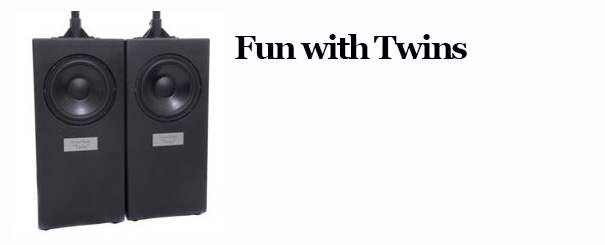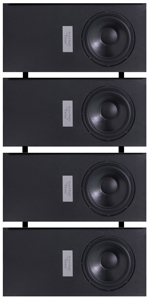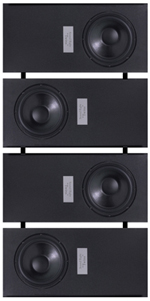Reviews
Read what some of the leading reviewers said about some of
David’s designs!
the amount of low bass energy
this speaker can produce is astounding..
is up there with the
established big boys, ATC, Genelec, PMC and the rest..
Hugh Robjohns
..an optional, I would
suggest imperative extra is on site analysis and alignment of the
system..
the
results were most impressive, exhibiting delicacy and presence
conveying the subtle detail..that few boxed loudspeakers can equal
Ivor Humphreys
"there
was absolutely no hint of either compression or distortion, just
limitless power coupled with lightning speed"
David Allcock
Other Links
Peter Mapp article
and others, Look here.

All the loudspeakers in the Sound Right range, either our own designs or recommended DML Panels are fully scalable and modular. This enables the user or installer to create systems appropriate for a diverse range of applications.
The ability to modify and direct dispersion makes all our equipment adaptable to virtually any venue which may include conference, church, theatre, studio through to high end domestic systems.
 |
Shown left are the Twins in a vertical array. This is a monopole arrangement which provides broad horizontal dispersion and narrower vertical dispersion.
Connecting the four as a group in series/parallel maintains an 8 ohm load but increases continuous power handling to 400 watts. This configuration is capable of 120dB/watt/metre whilst maintaining linear coil travel.
Mutual driver loading should drop the f3 to around 35Hz and its highest frequency in this configuration with all four receiving the same input signal should be no greater than 160Hz.
To avoid response anomalies caused by lobing due to the distance between the drivers, a staggered crossover configuration may be implemented to extend the frequency response of these stacks (See Dipolar Array Section!).
With secure rigging the array can be flown enabling angled cabinets for a curved array and “gain shading” may be applied where different levels may be set to individual cabinets, usually more to the top one or pair to account for near and far audience distances. Separate power amps required and measured set up essential.
The flown array may apply to the cardioid stacks as well shown on the following pages. |
A variation to modify dispersion is shown right.
Configuring as a Dipolar Array
|
|
